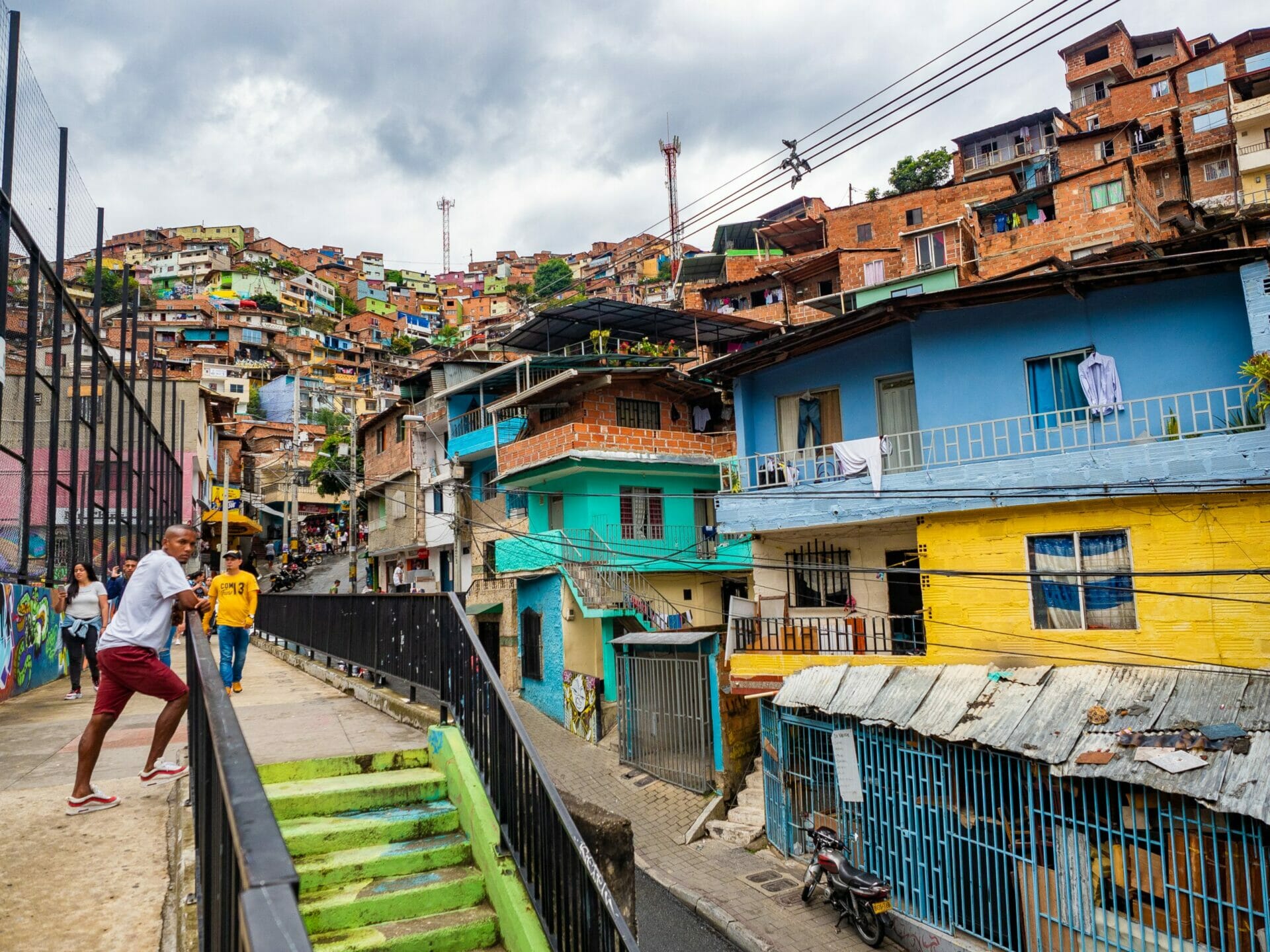
13 essential things to know about Comuna 13 & why you absolutely need to visit
Last Updated on 5 June 2022
Every day, dozens of energetic, bilingual paisa tour guides stand beneath vibrant red and blue umbrellas outside the San Javier Metro Station, each collecting a small group of travellers with whom to walk through Comuna 13, share stories of Medellín’s darkest days, and showcase the incredible transformation this city has undergone in just a few decades.
Bullet holes are painted over by vibrant street murals, outdoor escalators connect the barrio to the city below, locals sell handmade wares and tasty local delicacies to flushed gringos, and amidst it all, a palpable feeling of hope hangs over a place once plagued by gang violence and mercilessly presided over by Pablo Escobar and his cartel.
Previously the most dangerous neighbourhood in the world’s most dangerous city, Comuna 13 doesn’t seem like the kind of place that would attract a lot of tourist attention— and yet it’s probably the single most important place to visit while in Medellín. Here’s absolutely everything you need to know about Comuna 13, including some of its most significant history, what you can expect to see now, and how to visit the barrio yourself.
1 | Comuna 13 started as an illegal settlement above Medellín
Comuna 13 is a low socioeconomic neighbourhood perched above Medellín, its seemingly infinite swathe of polychromatic brick homes packed tightly onto the steep western hills. Although it’s (nearly) accessible from the Metro line, it’s still a world away from the rest of the city in many ways.
Hillside barrios like Comuna 13 were originally settled after violence in the Colombian countryside drove thousands of citizens into Medellín, all searching for refuge. Unfortunately, many of these people had little more than the clothes on their back and couldn’t afford to live within the city itself, so desperate residents were left to erect ramshackle, unsanctioned domiciles from found materials, practically right on top of each other.
The government didn’t recognise these residences as legal, which meant that Comuna 13 was not only left without any basic infrastructure, but also that the area received no support from the police. Its location and complete lack of police presence is really what combined to make Comuna 13 the perfect drug- and arms-trafficking intermediary between Medellín and the rest of the country— and indeed the rest of the world.

2 | Comuna 13 used to be the most dangerous place in Medellín
Much like the lawless favelas still operating under gang control in Rio de Janeiro, Comuna 13 spent the majority of the 1980s and 90s as a cartel stronghold, its prime (and otherwise unprotected) position between the city and the mountains making it the ultimate corridor for drugs to leave— and weapons to enter— Medellín.
Cast unwittingly at the centre of the Colombian drug trade and favoured by guerrilla groups hoping to arm desperate residents, Comuna 13 found itself hopelessly caught up in an ongoing war between the Medellín Cartel, opposing gangs, guerrilla insurgents like FARC, extremist paramilitary forces, and the government, each vying for control over the barrio.
All of these insatiable powers converging on a single neighbourhood translated to several decades of the most intense bloodshed the city had ever seen, with kidnappings, disappearances, and murder often a daily occurrence in Comuna 13. Locals describe living under this level of fear as practically crippling, wondering each night whether their loved ones would return home, and yet having no hope of escape.

3 | …which was also the most dangerous city in the world
Comuna 13 was once the most dangerous place in Medellín, but the rest of the city certainly wasn’t free from violence or cartel influence. In 1988, Time Magazine wrote an article titled “Welcome to Medellin, coke capital of the world”, which dubbed Colombia’s second largest city the most dangerous place on earth.
Government officials were assassinated with alarming frequency, bodies lay in the streets from the thousands of people murdered annually, and amidst it all, waring guerrilla and paramilitary groups ripped the country to literal shreds in a bid to gain political power. More than 200 bombs were detonated within the city in a single decade and 6,350 people were murdered in 1991 alone. It’s difficult to imagine living amidst this kind of unbridled, inexhaustible violence, but millions of paisas did.
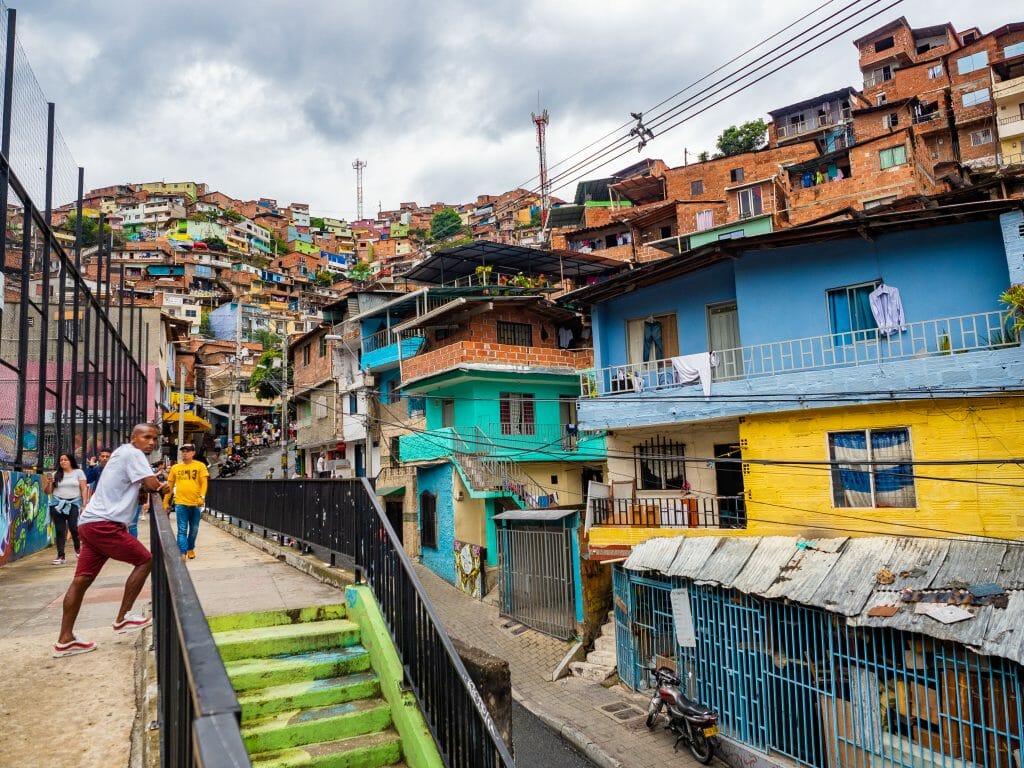
4 | Medellín & Comuna 13 have changed a lot in recent years
Thankfully, the Colombian government launched a successful operation to expel the cartel and guerrilla groups based in Comuna 13 and regain control of the tattered barrio in 2002. Like pretty much all of the activity within Comuna 13, there was a major unintended toll on innocent residents, hundreds of whom were killed or badly injured in the final military airstrike. Still, this marked a real turning point for Comuna 13— and Medellín.
Present day Medellín is the most vibrant and culturally rich city in Colombia, and perhaps nothing highlights its remarkable transformation better than, just 25 years after being called the “world’s most dangerous city”, being awarded the title of “world’s most innovative city” by the Urban Land Institute and Wall Street Journal. It’s an accolade hard earned but very well deserved.
No where is this incredible transformation better exemplified than in Comuna 13, whose bullet-riddled streets are now lit up by playful children and endless street art, a symbol of how far things have come in the years since gangs and drug lords presided over the city.

5 | …and that’s why you need to visit
Educating yourself about the darkest moments in a city’s history can sometimes feel morbid, but this kind of social and cultural awareness is unbelievably important when we travel. In fact, it’s kind of the whole point.
I don’t think you can really claim to have seen Medellín if you haven’t learned about its storied past, and you certainly can’t appreciate its incredible progress if you don’t know where its people have been. No book or documentary will ever do justice to actually visiting Comuna 13 with someone who lived through the wild fear and incredible violence of Escobar-era Medellín. And that is why you need to visit— to try and understand.
Want to discover more amazing things to do in Medellín? 9 AWESOME THINGS TO DO IN MEDELLÍN, COLOMBIA’S MOST INNOVATIVE CITY
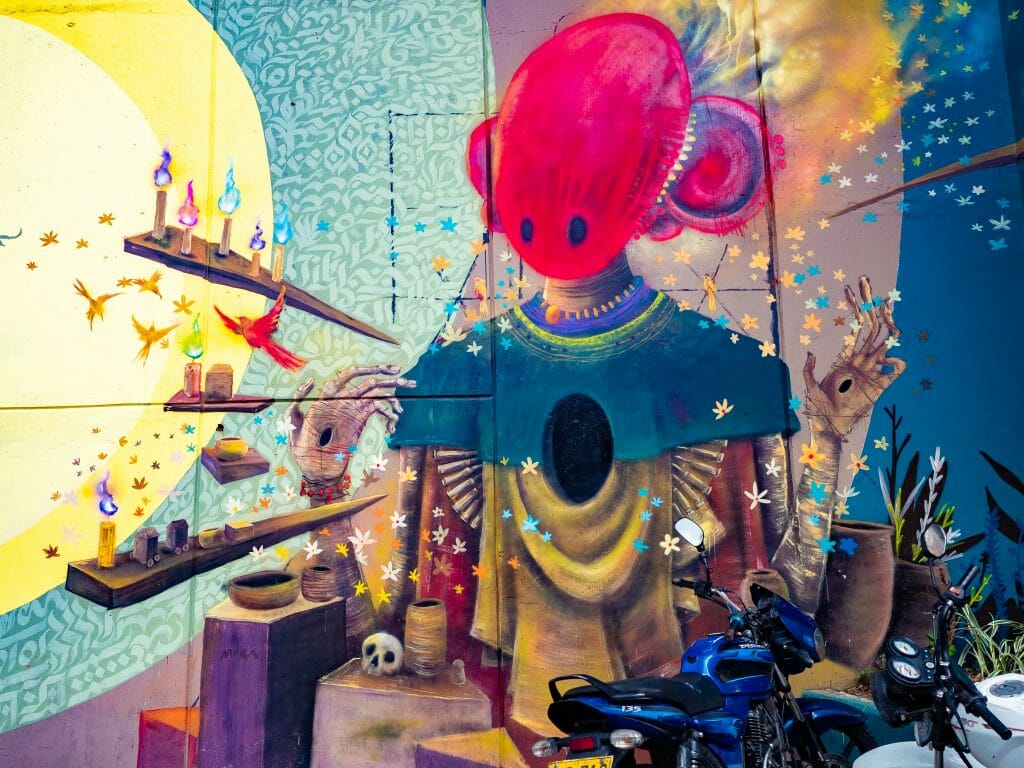
6 | Paisas still don’t like talking about Pablo Escobar
Even though Comuna 13 and its residents are in many ways incredibly open about the past, there’s one subject you’ll almost never hear broached: Pablo Escobar. In fact, most paisas won’t even say his name.
Nearly 50,000 Colombians lost their lives at the hands of the Medellín Cartel, Pablo’s highly organised and influential crime syndicate, over the course of its nearly-two-decade reign— some through direct involvement, but many others because they resisted corruption or simply because they were in the wrong place at the wrong time. Only 20 years ago, bodies lay in the streets, co-opted government officials looked the other way, more than 600 police officers were murdered at Pablo’s behest, and so many families lost their loved ones. These wounds are still very fresh in Medellín.
And so, while the rest of the world has descended inexorably into narco-fever, paisas are taking serious issue with popular media (and tourists) that romanticise their painful history and glorify the man responsible. As Mayor Federico Gutiérrez puts it: “We want to stop this mafia culture that gives us such terrible values. I would say to people who want to come to our city, you are welcome but please respect the story of our victims. They still exist. So much pain still exists.”
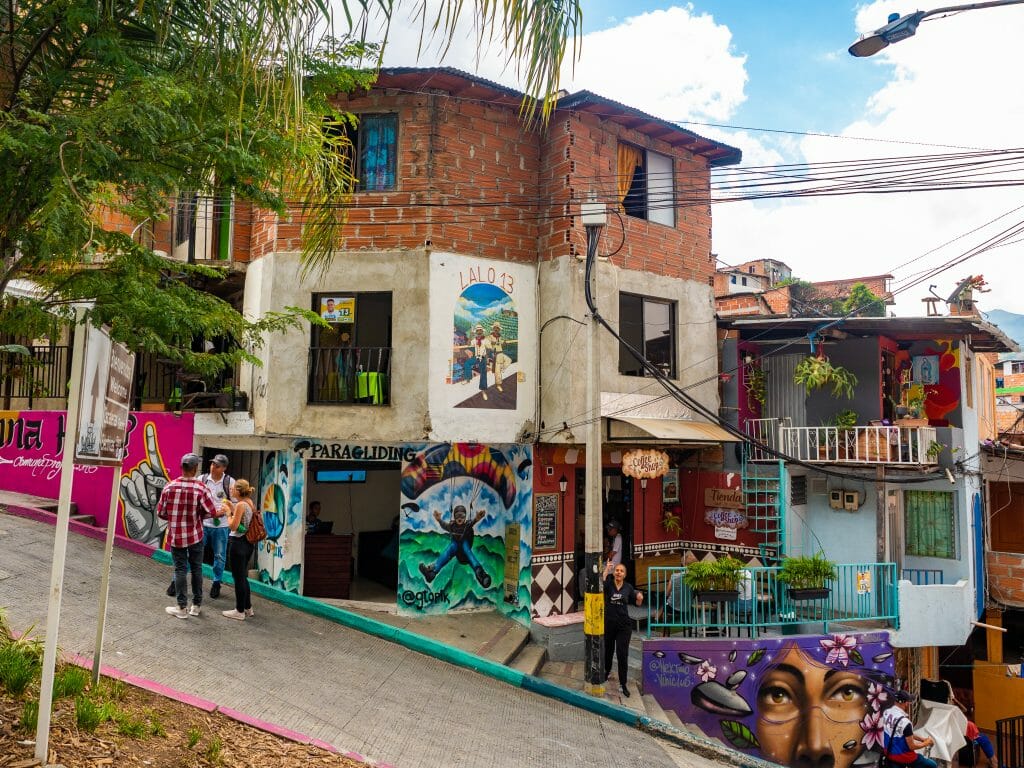
7 | Comuna 13 is now known for its street art
From a barrio characterised by violence and poverty to one known for its innovation and social enterprising, Comuna 13 has undergone an enormous transformation in the last few years, symbolised in large part by the art that now covers every building, wall, and stair.
All of Comuna 13’s spectacular street art hasn’t just given the barrio an aesthetic improvement, though— it’s been a creative outlet for locals to share their stories and spread hope for a brighter future, as well as an incredibly effective way to engage at-risk youth in positive community programs. Rather than wagging school or initiating into gangs, young paisas are now being encouraged to develop creative passions like painting. And this is how you should view art in Comuna 13: as a tool for powerful social change and unfettered cultural expression.




8 | …and there’s heaps of other art in Comuna 13, too
In addition to the murals and graffiti art covering every available surface in Comuna 13, you’ll also find lots of other art present in the barrio today. Most notably, talented groups of young hip-hop dancers perform in small squares and rappers spit quick-paced lyrics to crowds of eager onlookers.
These community initiatives are another huge win for Comuna 13, a way to engage young people who might otherwise be at risk for joining a gang or who might be tempted to turn to petty crime as a way to survive in the still-poor barrios around Medellín. Interacting with local artists is a really significant part of the Comuna 13 experience, both for you as a traveller and global citizen AND for paisas hoping to share some of their vibrant culture and beautiful city with the world.

9 | Comuna 13 is also famous for its outdoor escalators
Another of Comuna 13’s most striking features is the long string of outdoor escalators climbing up the hill, and these represent huge progress to locals in terms of social equity and accessibility. Where residents would have previously had to climb the equivalent of 28 stories to reach their home from the city, a 384m series of escalators now cut the journey down to a mere 6 minutes.
In addition to being wildly imaginative and yet another way that Medellín is leading the continent on social innovation, these escalators have provided an unprecedented level of mobility to citizen of Comuna 13, many of whom had been effectively cut off from the rest of the city due to the physical geography of their home and the difficulty in travelling from its steep streets.
In reverse, the escalators have also brought many city-dwelling paisas up into the hills for possibly the first time AND drawn thousands of tourists to the barrio, a major step in dissolving the stigmatism surrounding Comuna 13 and the socio-economic disparity perpetuated as a result of these attitudes.

10 | Comuna 13 has some of the best views over Medellín
Owing to its prime position in the hills, Comuna 13 also has one of the best views over Medellín that you’ll find anywhere in or around the city. On a clear day, you can see the entire metropolitan area sprawled out beneath you, as well as similarly chockablock brick homes crawling up adjacent hillsides.
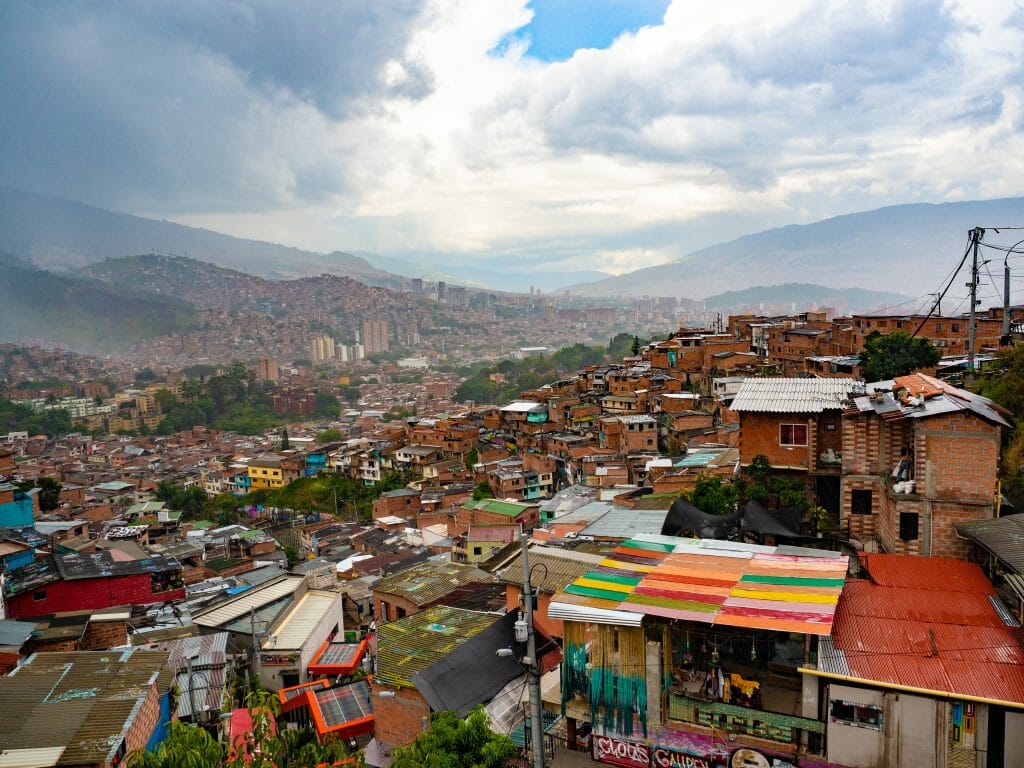
11 | You can visit Comuna 13 completely on your own
You can actually visit Comuna 13 on your own for no more than the cost of a metro ticket (2,550COP) and a quick bus ride or taxi to the base of the escalators (5,000COP).
During the daytime, it’s totally safe to do walk around the barrio on your own, and you’ll probably find that locals are happy to chat with you about their home (if you speak Spanish). There are also lots of little art galleries and cafes you can check out, so plan to spend at least a few hours exploring.
Read this post for heaps more info on how to get around Medellín using public transport: 9 AWESOME THINGS TO DO IN MEDELLÍN, COLOMBIA’S MOST INNOVATIVE CITY

12 | …but I’d recommend going with a local tour guide
Even though you CAN visit on your own, I’d strongly recommend opting for a guided tour instead. Not only is this the best way to learn about the neighbourhood’s transformation and the symbolism behind the most striking pieces of street art, it’s also an excellent way to support locals working hard to de-stigmatise their home.
A vast majority of the tour guides you’ll find (at least the good ones) grew up in Comuna 13 and many still live here today, so you’re also providing direct financial support to the local community.
There are heaps of tour options, but I’d personally recommend Zippy Tours, which departs from the San Javier Metro Station daily at 10am or 2pm. Although the tour is technically “free”, you should plan to tip around 20,000COP (less than $8AUD) per person. I promise it will be well worth it!

13 | Comuna 13 will change your impression of Colombia
Formerly a country whose political instability made it a no-go for travellers, Colombia is now one of the most popular destinations in Latin America, and even if you haven’t concluded that for yourself yet, you probably know half a dozen people who have. Its reputation is night and day to what it used to be, but chances are you’re thinking more about its Caribbean beaches and sultry cities than its troubled history when planning a trip.
Visiting Comuna 13 will change your impression of Colombia, but in the absolute best kind of way. This is a magical country with untold natural beauty, but it’s the incredible story of a dark fate subverted and rebirth from the ashes that really captivates.
Medellín and Comuna 13 are leading global examples of a city’s ability to endure in the face of unimaginable terror and remodel into the best possible version of itself, all whilst preserving a memory of the past and remaining brightly optimistic of an ever-improving future. If that doesn’t inspire you, I’m not sure what will.

Read more about Colombia
9 AWESOME THINGS TO DO IN MEDELLÍN, COLOMBIA’S MOST INNOVATIVE CITY
11 AMAZING THINGS TO DO IN SAN GIL: A GUIDE TO COLOMBIA’S ADVENTURE CAPITAL
HOW TO GET FROM BOGOTÁ TO SAN GIL: COLOMBIA TRANSPORT GUIDE
TRAVELLING FROM BOGOTÁ TO MEDELLÍN VIA BUS OR PLANE: COLOMBIA TRANSPORT GUIDE
THE BEST WAY TO GET FROM SAN GIL TO MEDELLÍN (BUS VS FLIGHT): COLOMBIA TRANSPORT GUIDE
EVERYTHING YOU NEED TO KNOW ABOUT VISITING GUATAPÉ AS A DAY TRIP FROM MEDELLÍN, COLOMBIA
HOW TO GET FROM MEDELLÍN TO SANTA MARTA (BUS OR FLIGHT): COLOMBIA TRANSPORT GUIDE
HOW TO GET FROM CARTAGENA TO MEDELLÍN (BUS OR FLIGHT): COLOMBIA TRANSPORT GUIDE
MORE COMING SOON

The Comments
Anonymous
a very nice article. I would recommend every0ne take a communa 13 tour on saturday’s after 11am.
Khoa Ho-Le
I’ve just visited Medellin and Communa 13 two weeks ago. I’ve learnt many of the points the author makes in this article. But the article goes much further. It’s a great article.
brooke brisbine
Khoa Ho-LeThanks so much for reading, Khoa!
xx bb